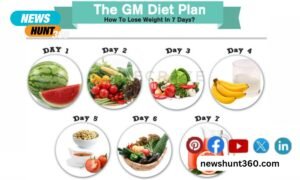Getting started on a new diet is one of the most difficult things to do. Habits are so ingrained in human beings, that it simply takes time and effort to change habits. This is especially true with eating habits.
Contents
- 1 Whole Food, Plant-Based Diet
- 2 What is WFPB?
- 3 5 Tips on How to Start a WFPB Diet
- 4 Find a few recipes that you like and make them often and in large batches
- 5 Include filling foods such as (sweet) potatoes
- 6 Do your meal prep
- 7 Connect with others who also follow a WFPB diet
- 8 Slowly work your way through changing your eating habits
Whole Food, Plant-Based Diet
So you´ve watched Forks Over Knives, The Game Changer and/or Seaspiracy, and now you are convinced about the benefits of a Whole Food, Plant-Based diet? And you have decided to give it a try? If yes, you have come to the right place. It’s time for you to start on a WFPB diet!
What is WFPB?
WFPB stands for Whole Food, Plant-Based. This way of eating is about maximizing the intake of plant-based food products (from whole sources), while minimizing the intake of animal-based products.
Things like beef, fish, cheese, milk and butter are not part of the WFPB diet. Instead, the emphasis is on fruits, vegetables, whole grains, nuts and seeds. Also, plant-based products in their whole form are superior to those that are processed. An example of this is olive oil versus olives.
Olives in their whole form contain all their original nutrients, while olive oil is highly processed and has lost a lot of its original nutritional value. To get the most out of plant-based food, it is thus best to consume wholesome products.
5 Tips on How to Start a WFPB Diet
- Find a few recipes that you like and make them often and in large batches
- Include filling foods such as (sweet) potatoes
- Do your meal prep
- Connect with others who also follow a WFPB diet
- Slowly work your way through changing your eating habits
Find a few recipes that you like and make them often and in large batches

One of the biggest mistakes people make when they get started on a WFPB diet is that they want to innovate all the time. It is best to find a few recipes that you really like, and to then make the same recipe frequently. This will make it easy for you and your plant-based family to adapt to the new way of eating, and from thereon you can explore other recipes.
Include filling foods such as (sweet) potatoes
Salads are not going to do the job. If you rely too much on light foods such as fruits and salads, you will most likely quickly find that you won´t last too long. Instead, focus on building your diet around filling foods. Our favourites include potatoes and sweet potatoes. Whole grains such as brown rice and quinoa are also great foods to keep you full and satisfied for a while.
Do your meal prep
It helps if you have a large freezer, as it will allow you to store batches of WFPB meals you made. Meal prepping is something highly recommended as it not only saves you time, it also saves you the hassle of trying to figure every meal out. Pastas, rice dishes, lentil soups are just some examples of meals that can easily be prepped in large quantities.
Connect with others who also follow a WFPB diet
As you may have noticed, not many people are keen on a Whole Food, Plant-Based way of eating. Who do you turn to when you have questions or concerns? Thus, to be successful, you may find it challenging to find the right support in your direct environment. Therefore we recommend finding support groups online, such as the following Facebook groups:
Slowly work your way through changing your eating habits
People try to jump into something new and for some that will work, but most of us need some time to adapt. If you suddenly quit all animal products and processed foods, you may find it challenging and get discouraged quickly. Instead, a slow-paced transition in which you, for example, replace one habit each week, may be more suitable for you.
Most importantly, try to enjoy every moment and embrace the new tastes and flavours you are being exposed to!




